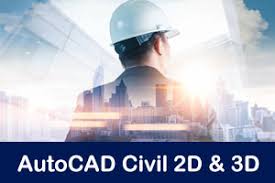Mastering AutoCAD Civil Training for Engineering Excellence

In the fast-paced world of civil engineering and construction, the need for precise and efficient design tools is paramount. AutoCAD Civil, a powerful software program, has revolutionized the way professionals in the field conceptualize, design, and execute projects. At Burraq Engineering Solutions, we understand the significance of harnessing the full potential of AutoCAD Civil, and that’s why we’ve put together this comprehensive training guide to help you excel in the world of civil engineering. Burraq Engineering Solutions is an Engineering institute that provide AutoCAD Civil Training in Lahore.
Table of Contents:
Introduction to AutoCAD Civil Training
Why AutoCAD Civil Matters
About Burraq Engineering Solutions
Getting Started with AutoCAD Civil
System Requirements
Installing AutoCAD Civil
The User Interface
Navigating the Workspace
Customizing Your Workspace
Creating Your First Civil Drawing
Setting Up a New Project
Drawing Basics
Understanding Geospatial Data
Importing Survey Data
Working with Geographic Information Systems (GIS)
Designing Roads and Infrastructure
Roadway Design Tools
Utility Design and Analysis
Site Grading and Terrain Modeling
Terrain Modeling Techniques
Grading Plan Design
Civil 3D Tools and Features
Dynamic Labeling
Analyzing and Visualizing Data
Collaboration and Data Sharing
Data Exchange with Other Professionals
AutoCAD Civil 3D in BIM Workflows
AutoCAD Civil Training FAQs
Is prior AutoCAD experience necessary?
How long does it take to master AutoCAD Civil?
Do I need a high-end computer for AutoCAD Civil?
Taking Your Skills to the Next Level
Advanced Training Options
Certifications and Career Opportunities
Conclusion
1. Introduction to AutoCAD Civil Training
Why AutoCAD Civil Matters
In today’s engineering landscape, precision and efficiency are non-negotiable. AutoCAD Civil, a part of the AutoCAD family, is specifically tailored to meet the demands of civil engineering projects. It provides tools and functionalities that streamline the design process, reduce errors, and enhance collaboration. Whether you are involved in road design, site development, or urban planning, mastering AutoCAD Civil can be a game-changer.
About Burraq Engineering Solutions
At Burraq Engineering Solutions, we are committed to providing top-notch training and resources to empower engineers and architects in their pursuit of excellence. We understand the importance of equipping professionals with the skills and knowledge required to succeed in today’s competitive industry.
2. Getting Started with AutoCAD Civil
System Requirements
Before you dive into AutoCAD Civil training, it’s essential to ensure your system meets the software’s requirements. The specific requirements may vary depending on the version of AutoCAD Civil you are using. However, as a general guideline, you should have:
A compatible 64-bit operating system (e.g., Windows 10 or newer)
A multi-core processor (typically Intel Core i7 or equivalent)
At least 16GB of RAM (32GB or more recommended)
A dedicated graphics card (NVIDIA or AMD) with 4GB or more video memory
A high-resolution display (1920 x 1080 or higher)
A pointing device (e.g., a mouse with a scroll wheel)
At least 12GB of free disk space for installation
Always check the official AutoCAD Civil system requirements for the most up-to-date information.
Installing AutoCAD Civil
Once you’ve verified that your system meets the requirements, the next step is to install AutoCAD Civil. You can obtain the software through authorized resellers or directly from the Autodesk website. Follow the installation instructions provided, and don’t forget to activate your license.
3. The User Interface
Navigating the Workspace
AutoCAD Civil features a user-friendly interface that is designed to enhance productivity. The workspace consists of various panels and tool palettes, which you can customize according to your preferences. Familiarizing yourself with the interface is the first step in becoming proficient with the software.
Customizing Your Workspace
One of the strengths of AutoCAD Civil is its adaptability. You can tailor the interface to suit your needs by creating custom workspaces, modifying ribbon panels, and configuring toolbars. This flexibility ensures that you have quick access to the tools you use most frequently, improving your workflow.
4. Creating Your First Civil Drawing
Setting Up a New Project
Before you start drawing, it’s important to set up your project correctly. This involves defining coordinate systems, units of measurement, and project-specific settings. By doing this, you establish a foundation for precise and accurate drawings.
Drawing Basics
AutoCAD Civil offers a wide range of drawing tools, including lines, polylines, arcs, and more. You’ll learn how to use these tools to create basic shapes and elements. Additionally, you’ll explore techniques for managing layers, colors, and linetypes.
5. Understanding Geospatial Data
Importing Survey Data
AutoCAD Civil allows you to seamlessly import survey data, which is crucial for civil engineering projects. You’ll discover how to import point data, terrain models, and other geospatial information, and then integrate it into your design.
Working with Geographic Information Systems (GIS)
Many civil projects involve working with GIS data. AutoCAD Civil enables you to incorporate GIS information, perform spatial analysis, and generate maps and reports. This integration streamlines decision-making processes and enhances the quality of your designs.
6. Designing Roads and Infrastructure
Roadway Design Tools
AutoCAD Civil excels in roadway design. You’ll delve into the tools for creating horizontal and vertical alignments, cross-sections, and profiles. These tools are essential for planning and designing roads, highways, and other transportation infrastructure.
Utility Design and Analysis
Civil engineering often involves designing utility systems, such as water, sewer, and storm drainage. AutoCAD Civil offers powerful tools for designing and analyzing these networks, ensuring that they function efficiently and meet regulatory requirements.
7. Site Grading and Terrain Modeling
Terrain Modeling Techniques
Site development projects require precise terrain modeling. AutoCAD Civil provides tools for creating digital terrain models (DTMs) and making cut and fill calculations. You’ll learn how to sculpt the landscape to meet project requirements.
Grading Plan Design
Grading plans are essential for ensuring that the final site meets design specifications. AutoCAD Civil’s grading tools help you create detailed plans that guide earthwork operations, minimizing errors and reducing construction costs.
8. Civil 3D Tools and Features
Dynamic Labeling
Labels are vital for conveying information in civil engineering drawings. AutoCAD Civil 3D allows you to create dynamic labels that update automatically as your design evolves. This not only saves time but also reduces the risk of errors.
Analyzing and Visualizing Data
The software offers advanced data analysis and visualization capabilities. You’ll explore how to generate reports, perform quantity takeoffs, and create compelling visualizations that help stakeholders understand the project’s intricacies.
9. Collaboration and Data Sharing
Data Exchange with Other Professionals
Collaboration is key in civil engineering projects. AutoCAD Civil facilitates data exchange with other professionals using industry-standard file formats. You’ll learn how to import and export data seamlessly, ensuring that everyone is on the same page.
AutoCAD Civil 3D in BIM Workflows
Building Information Modeling (BIM) is becoming increasingly important in the AEC (Architecture, Engineering, and Construction) industry. AutoCAD Civil 3D supports BIM workflows, allowing you to collaborate with architects, structural engineers, and other stakeholders in an integrated environment.
10. AutoCAD Civil Training FAQs
Is prior AutoCAD experience necessary?
No, prior AutoCAD experience is not mandatory, but it can be helpful. AutoCAD Civil has its own unique features and tools, and our training program is designed to accommodate both beginners and experienced AutoCAD users.
How long does it take to master AutoCAD Civil?
The time it takes to master AutoCAD Civil can vary from person to person. It depends on your prior experience, the depth of training you pursue, and the complexity of the projects you work on. Generally, a few months of dedicated training can make you proficient, but ongoing learning is common in this field.
Do I need a high-end computer for AutoCAD Civil?
While AutoCAD Civil can be demanding on your computer, you don’t necessarily need a high-end system. It’s recommended to meet the minimum system requirements mentioned earlier, but having a more powerful computer will improve your experience, especially when working on larger and more complex projects.
11. Taking Your Skills to the Next Level
Advanced Training Options
AutoCAD Civil is a versatile software that offers many advanced features. You can further enhance your skills by exploring specialized training in areas such as pipe network design, geotechnical analysis, or advanced surveying techniques. These skills can open up new career opportunities.
Certifications and Career Opportunities
Earning AutoCAD Civil certifications can boost your career prospects. Autodesk offers a range of certification exams that validate your expertise. These certifications are recognized worldwide and can make you a more attractive candidate for job opportunities in civil engineering and related fields.
12. Conclusion
Mastering AutoCAD Civil is not just about learning a software program; it’s about gaining the skills and knowledge necessary to excel in the field of civil engineering. At Burraq Engineering Solutions, we are dedicated to helping you on your journey to becoming a proficient AutoCAD Civil user. With the right training, you can unlock the power of AutoCAD Civil, streamline your workflow, and create more accurate and efficient civil engineering designs.
By investing in your AutoCAD Civil training, you’re not only investing in your professional growth but also in the success of your future projects. Don’t wait—get started on your path to engineering excellence with AutoCAD Civil at Burraq Engineering Solutions today.
To learn more about AutoCAD Civil training, visit the kpongkrnlkey website.




